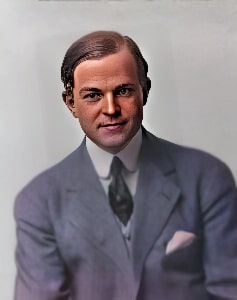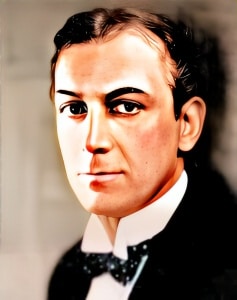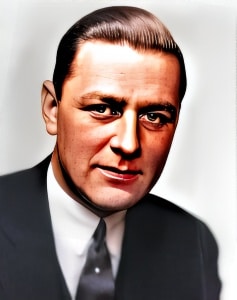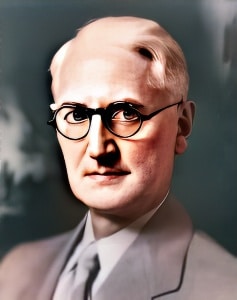 William Andrew Quirk, born on March 27, 1873, in Jersey City, New Jersey, was an American stage and silent-film actor who graced the silver screen with his talent and charisma.
William Andrew Quirk, born on March 27, 1873, in Jersey City, New Jersey, was an American stage and silent-film actor who graced the silver screen with his talent and charisma.
His career, spanning from 1909 to 1924, saw him leave an indelible mark on the burgeoning film industry, contributing to over 180 films during the silent era.
Quirk’s journey into the world of entertainment began at a time when the cinematic landscape was evolving, and silent films were becoming a powerful medium of storytelling. His ability to convey emotion and captivate audiences without uttering a word made him a sought-after performer in an era where the art of silent acting was at its zenith.
The actor’s association with Gem Motion Picture Company stands out as a significant chapter in his career. The company produced a series of films featuring Quirk in lead roles, often bearing the moniker “Billy” in their titles. This collaboration showcased Quirk’s versatility and established him as a recognizable face in the world of silent cinema.
One notable entry in Quirk’s filmography is “ A Strange Meeting” (1909), where he portrayed a character grappling with the challenges of inebriation. This early performance hinted at Quirk’s ability to tackle diverse roles, setting the stage for a career marked by a rich tapestry of characters.
Born in Jersey City, Quirk’s upbringing and early influences remain a subject of historical intrigue. The late 19th century provided a backdrop of societal changes and technological advancements, and Quirk’s foray into entertainment coincided with the growing popularity of motion pictures. As a young man navigating the burgeoning industry, he became part of a generation of actors who witnessed the transformative power of cinema.
The silent-film era was characterized by its reliance on visual storytelling, where actors conveyed emotions through facial expressions, body language, and gestures. Quirk, with his expressive features and the ability to communicate without words, thrived in this era. His performances resonated with audiences, contributing to the magic of silent storytelling.
The challenges of silent-film acting were unique, requiring performers to convey complex narratives without the aid of spoken dialogue. Quirk’s dedication to his craft and his innate understanding of the medium positioned him as a reliable and talented actor in an era where storytelling underwent a radical transformation.
Quirk’s filmography reflects the evolving landscape of silent cinema. From early short films to feature-length productions, he navigated the changing currents of the industry. Each film added a layer to his artistic legacy, showcasing his adaptability and contributing to the rich tapestry of silent storytelling.
The silent-film era also brought about the rise of film studios and production companies, each contributing to the shaping of cinematic narratives. Quirk’s collaboration with Gem Motion Picture Company exemplified the synergy between actors and studios during this transformative period. The “Billy”-titled series became a testament to his popularity and the studio’s recognition of his on-screen appeal.
Tragically, Quirk’s life was cut short, and he passed away on April 20, 1926, in Los Angeles, California. Despite the brevity of his time in the limelight, his contributions to silent cinema endure. His performances, captured in the frames of celluloid, continue to be a window into an era where storytelling relied on the magic of images and the artistry of actors.
In retrospect, William Andrew Quirk stands as a silent screen luminary—a performer whose work transcended the limitations of early cinema. His legacy lives on in the annals of film history, reminding us of an era when silent storytelling laid the foundation for the cinematic wonders of the decades to come.

 William Andrew Quirk, born on March 27, 1873, in Jersey City, New Jersey, was an American stage and silent-film actor who graced the silver screen with his talent and charisma.
William Andrew Quirk, born on March 27, 1873, in Jersey City, New Jersey, was an American stage and silent-film actor who graced the silver screen with his talent and charisma.


